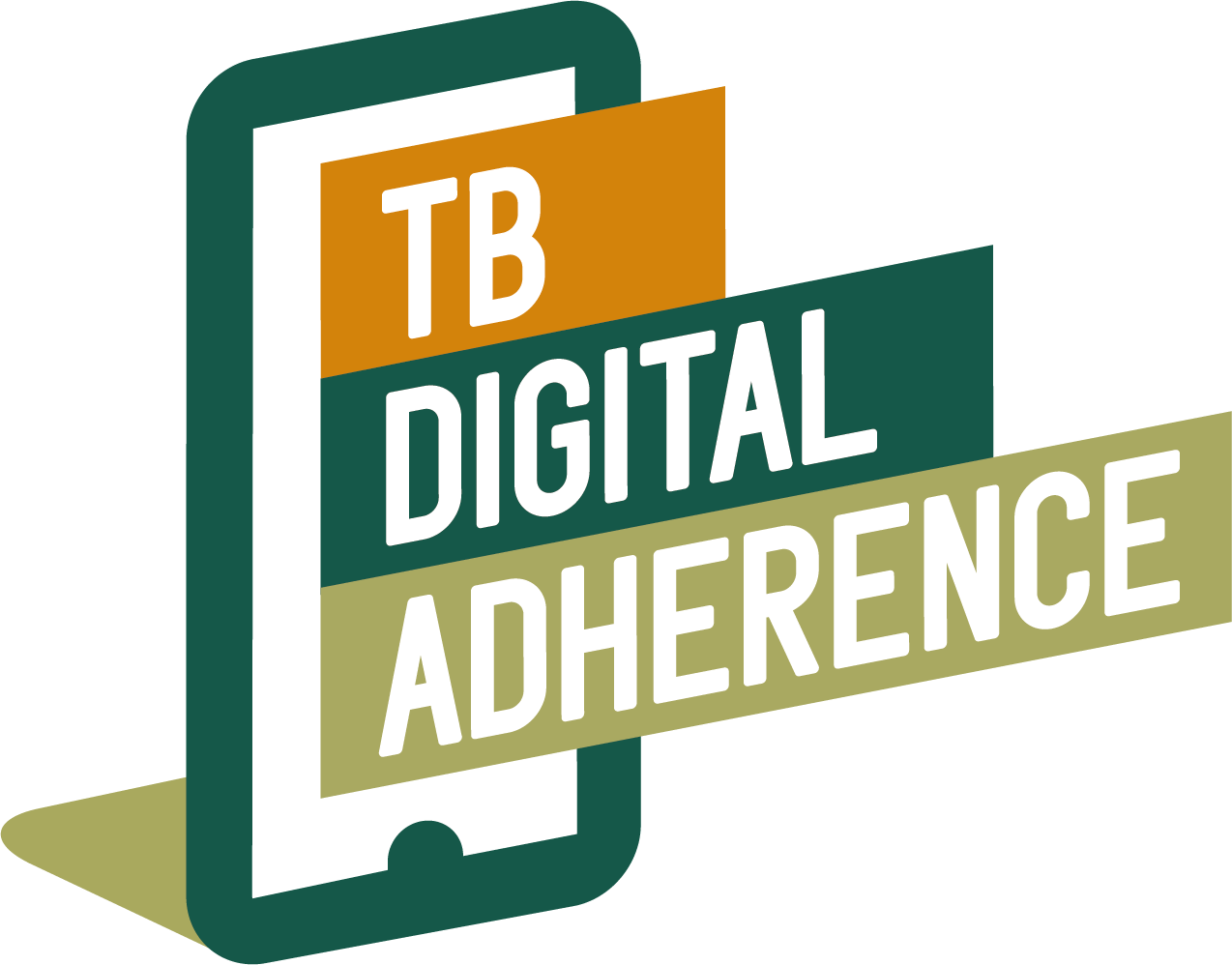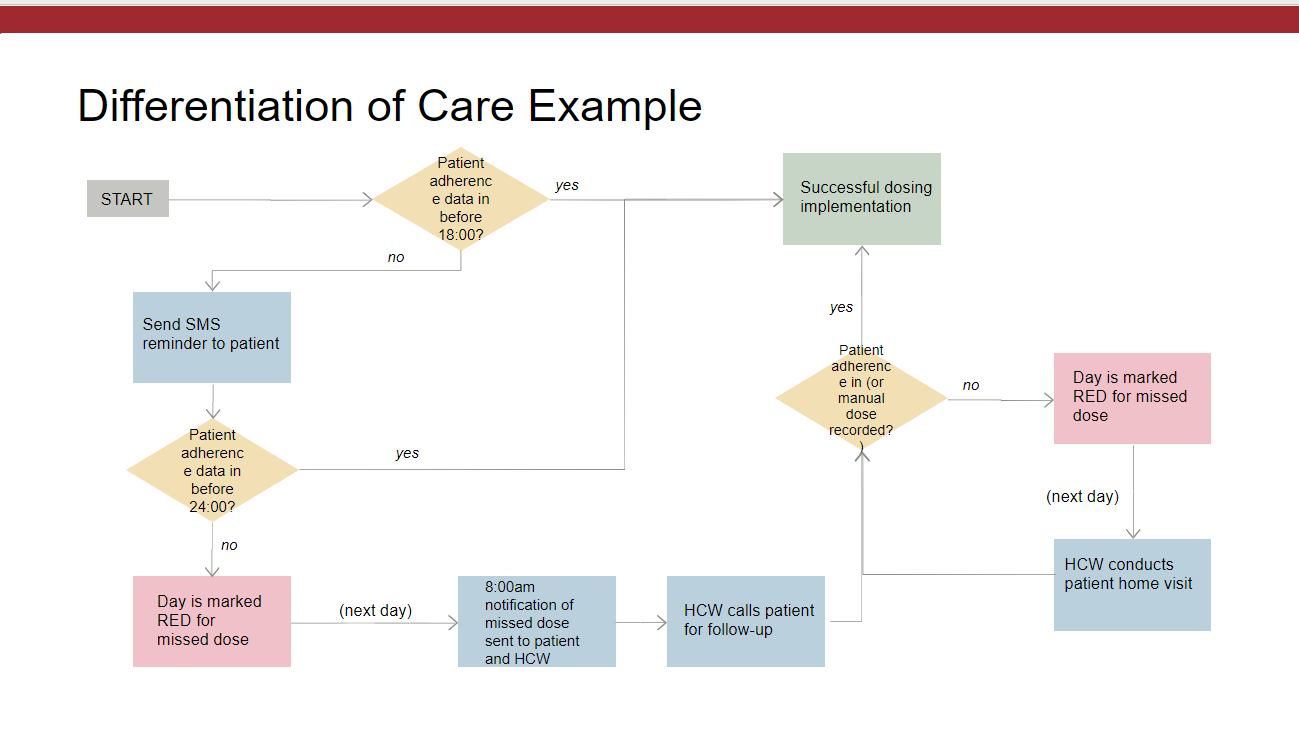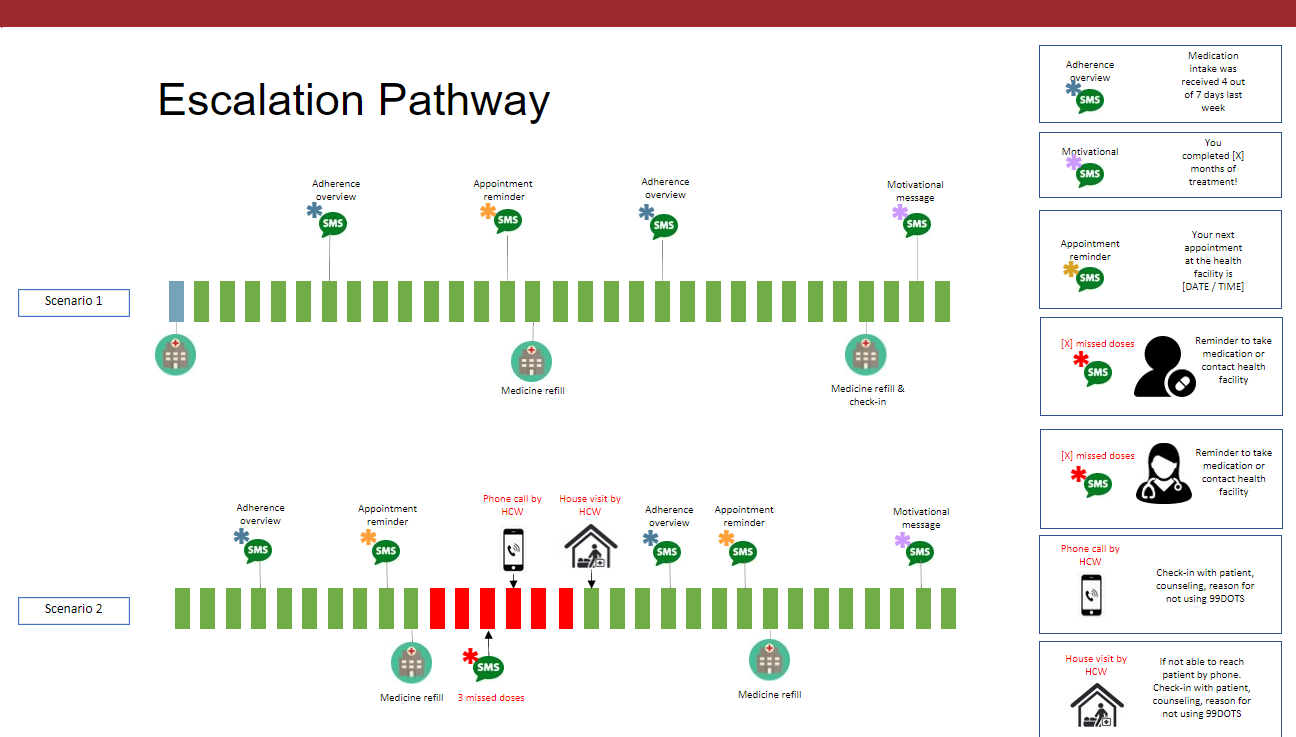Phase 4
Customizing the Intervention
Customization ensures that the DAT intervention is adapted to suit the needs of the local treatment setting.
Ideally customization should occur in close collaboration with the end-user (patients) and stakeholders, who will be impacted by the intervention, as they can offer local insights about suitable approaches for the target population, the current standard of care, etc. It also creates opportunity for local ownership, as discussed in the design phase.
Request Technical Assistance
Develop a differentiated care pathway
The differentiation of care pathway defines when actions should be carried out to support patients during their treatment.
Action examples include:
- When a reminder message should be sent if a patient misses a dose?
- After how many missed dosages a health care worker should follow up with the patient?
In most cases the care pathway should be an adaptation of the current standard of care at facility level. Some initial investment may be necessary to support professional development and quality improvement, but the intention is not to implement new programs or processes requiring huge resources or policy changes.
Download our workshop presentation for developing a differentiation of care pathway.
Develop an intervention and escalation pathway
Developing the intervention pathway outlines moments in the treatment and adherence journey for targeted and/or additional support using patient dosing history, as well as common trends in non-adherence.
Intervention considerations could include:
- At what moments during the treatment journey should targeted educational or motivational messages be sent to patients?
- Which moments in the treatment journey carry a higher risk of non-adherence (for example during the festive season)? What strategies could be implemented to support patients during these periods?
- How should non-adherent patients be supported and by whom?
Consult the intervention and escalation pathway downloadable resources for further information.
Download our workshop presentation for developing an intervention and escalation pathway.
Workshop
A workshop presentation to develop an intervention design and differentiation of care pathway with stakeholders.
Customize the physical DAT
Irrespective of which DAT has been selected for implementation, there is a degree of adaptation required to ensure it fits the country context and target population.
Adaptations that could be included in the DAT customization include:
- Translating the medication instruction label to the local language
- Adapting medication instructions font and colour
- Adapting the medication sleeve / label print template to fit the medication blister packaging
- Including or excluding medication compartments in the Smart Pill Box
The downloadable resources include workshop presentations for each DAT which guides presenters and stakeholders through the process of collaboratively adapting the DAT.
Medication Sleeve/Label - Workshop
A workshop presentation to adapt the medication sleeve/label with relevant stakeholders.
Smart Pill Box - Workshop
A workshop presentation to adapt the smart pill box with relevant stakeholders.
Customize the platform
Like customizing the physical DAT, the platform also requires a degree of adaptation to ensure it fits the needs of the country context, patients, and healthcare workers.
Questions to consider when customizing the platform can include:
- What patient details to include?
- What language should the dashboard use?
The downloadable resources include a workshop presentation that guides the process of collaboratively adapting the adherence platform.
Request a platform Demo
Workshop
A workshop presentation to adapt the adherence platform with relevant stakeholders.
Technical Assistance
The Global DAT Task Force has provided technical assistance to countries in their DAT planning, roll-out and scale up, including:
- Budget development
- Proposal development for the inclusion of DATs in Global Fund applications
- Identifying additional local and global funding streams
- Adherence platform comparison and selection
- DAT implementation assessment
- DAT procurement support
Contact us for technical assistance should you require that.
Book a consultation
Featured Resources
Workshop
Intervention and Differentiated Care Pathway
Workshop
Customize the Adherence Platform
Workshop
Customize the Smart Pill Box
Workshop
Customize the medication sleeve/label
Implementing DATs
The phased, step-wise approach to implementing a DAT intervention.
Assess
Gain an understanding about influencing factors within your context for a DAT implementation.
Design
Considering multiple facets of a DAT intervention to ensure the design of a robust intervention that is relevant for your country context.
Budget
Cost factors associated with a DAT intervention in your context, including once-off costs and on-going programmatic costs.
Customization
Customize the DAT intervention to suit the needs of the local treatment setting.
Procurement
Steps in procurement to ensure the necessary technology is ordered and supportive infrastructure is in place before the intervention begins.
Train & Integrate
A training package to integrate DATs into the TB treatment programme to fully utilize the DAT for optimal efficiency and productivity.


